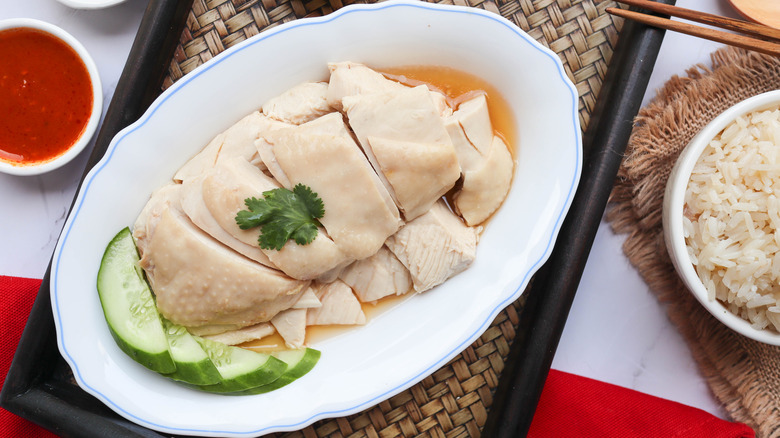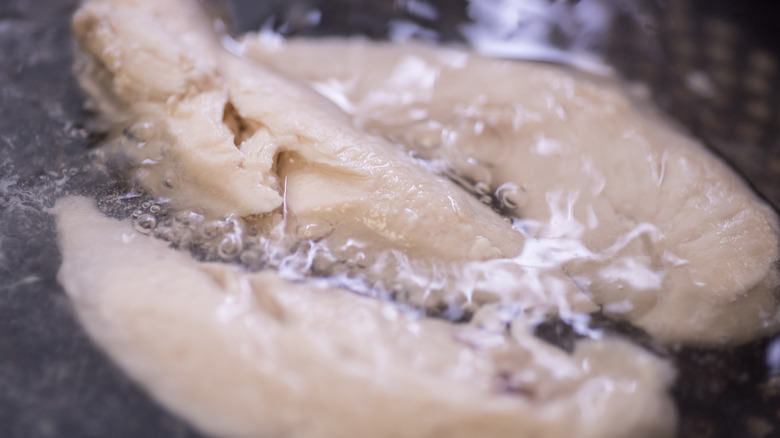The Simple Trick For More Succulent Poached Chicken
If you're anything like most Americans, you eat a whole lot of chicken: To the tune of 97 lbs. per person per year, according to The National Chicken Council. For those of us who enjoy meat, it's not hard to understand why chicken lands on our dinner (and lunch, and breakfast) plates so often: A mild, versatile protein that takes well to a variety of cooking methods, chicken is also one of the most affordable meat options at the grocery store, especially when you buy it whole and butcher it yourself, according to Leite's Culinaria.
What's your favorite way to cook chicken at home? According to a recent poll of Tasting Table readers, the reigning method for preparing chicken is grilling it, a technique that can lock in juiciness as well as impart a smoky flavor. So what was dead-last choice? That dubious honor went to the method of poaching chicken, which means simmering it in water until cooked through, according to Kitchn. Many of us probably associate poached chicken (and fish) with diet food, as it uses only water or broth and no added fat, and poached chicken is often considered bland, rubbery, or both (via Taste of Home). Adding flavor to poached chicken is easy — you can slip all manner of aromatics such as fresh garlic or herbs into the liquid — but what's the best way to ensure that it turns out moist and silky as opposed to tough and dry?
Start your poached chicken in cold water
If you've ever poached chicken, fish, or any other protein at home, you may have started with simmering or even boiling water when you added your ingredient to the pot. Although poached chicken simmer in water or broth until cooked through, it's important to start cooking the protein in cold, not hot, water to ensure a tender, juicy end result. According to Serious Eats, dropping chicken into boiling water causes the flesh to contract, squeezing out all of its precious moisture and leaving a dry, firm piece of meat.
On the other hand, adding cold (or room temperature) liquid to a pot in which you've placed your chicken and then bringing the temperature up to a simmer throughout the rest of the cooking process makes a poached chicken that's moist and tender, since the meat is cooked more gently. Serious Eats recommends taking your poaching liquid's temperature with an instant-read thermometer and doing your best to maintain its temperature between 150-160 degrees F, which will bring bone-in chicken breasts to fully cooked in about an hour. To confirm the poultry's doneness, check the thickest part with a thermometer and look for a temp of 150 degrees; then, remove the chicken from the poaching liquid and let it rest before incorporating the meat into salads, sandwiches, grain bowls, or fried rice.

